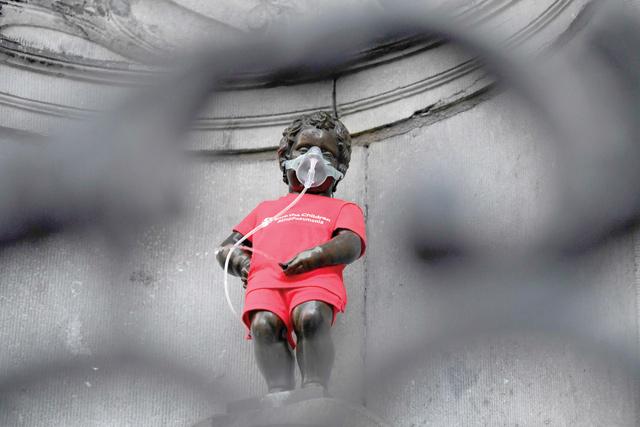You are here
Children’s hospitals more likely to give recommended antibiotics for pneumonia
By Reuters - Jan 06,2019 - Last updated at Jan 06,2019

AFP photo
Kids with pneumonia may be more likely to receive recommended antibiotics when they are treated at a children’s hospital than when they are seen elsewhere, a US study suggests.
While milder cases of pneumonia may clear up without treatment, antibiotics are recommended for more serious cases that can lead to potentially fatal lung infections. Since 2011, US guidelines have recommended so-called narrow spectrum antibiotics — penicillin, amoxicillin and ampicillin — for kids hospitalised for pneumonia.
For the study, researchers examined data on antibiotic use for 120,238 kids treated for pneumonia at 51 children’s hospitals and 471 non-children’s hospitals from January 2009 through September 2015.
During the study period, the proportion of children’s hospitals giving narrow-spectrum antibiotics to kids with so-called community acquired pneumonia — or cases caught outside the hospital — increased from 25 per cent to 61 per cent, researchers report in JAMA Pediatrics. At other hospitals, the proportion of these kids who received recommended antibiotics climbed from 6 per cent to 27 per cent.
“Narrow-spectrum antibiotics are recommended over broad-spectrum antibiotics because narrow-spectrum antibiotics provide similar [and sometime better] clinical cure rates, are less likely to cause antibiotic-resistance, typically have fewer side effects [like diarrhea], and are less expensive,” said senior study author Jeffrey Gerber of the University of Pennsylvania School of Medicine and Children’s Hospital of Philadelphia.
These findings come at a time when hospitals nationwide are increasingly grappling with antibiotic-resistant “superbugs” that do not respond to available medicines.
Sometimes overuse results from incorrectly giving patients antibiotics for viral infections like the flu that will not respond to these drugs. Other times, however, overuse involves giving patients an antibiotic that’s less effective for their condition before switching to a different antibiotic that’s better suited to their illness.
The study was not a controlled experiment designed to prove whether or how treatment at a children’s hospital might directly influence the chances of kids receiving the recommended antibiotics for pneumonia.
“For example, at Children’s Hospital of Philadelphia, we have a clinical quality improvement team that generates, updates, and disseminates guidelines for managing common pediatric illnesses as well as an Antimicrobial Stewardship Programme that ensures that children receive the correct choice, dose and duration of antibiotics,” Gerber added.
But about 70 per cent of hospitalised children don’t receive care at children’s hospitals, the study authors note.
It is unlikely that children’s hospitals are treating different patient populations than other hospitals that could explain the difference in antibiotic use in the study because researchers only looked at healthy children with uncomplicated community acquired pneumonia, the authors write.
The results suggest that there is a need for more programmes focused on antibiotic stewardship at hospitals that do not specialise in treating children, the authors conclude.
This is one example of a scenario where, in general, children who are cared for in children’s hospitals appear to be receiving more guideline-recommended care than those who are not.
Related Articles
Kids who get treated with broad-spectrum antibiotics before age two face a higher risk of childhood obesity, said a US study on Monday.
PARIS — Pneumonia is the world's deadliest child killer, with a "forgotten epidemic" claiming one young life every 39 seconds, international
More than half of the US children may not be getting the recommended amount of physical activity and doctors can help by making exercise one


















